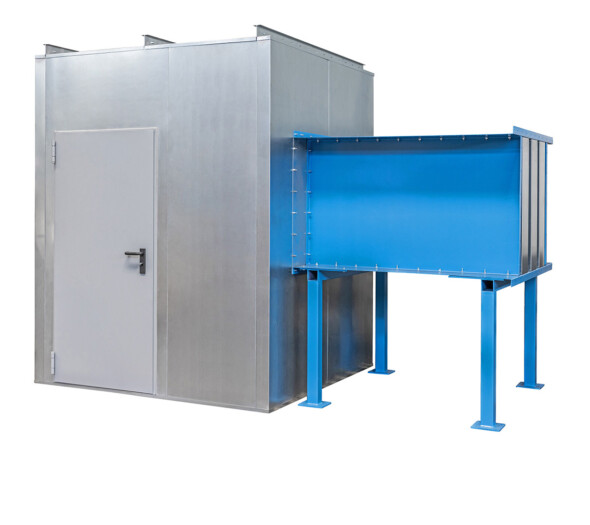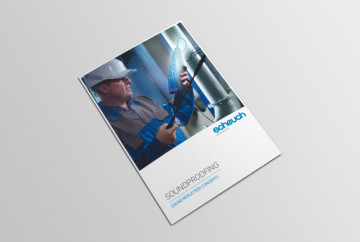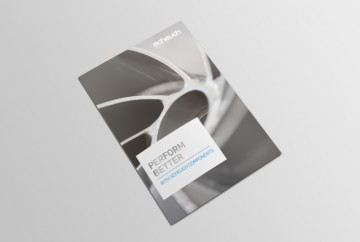Industrial soundproofing cabinets
Industrial soundproofing cabinets
The ideal way to protect your employees and the environment
Many industrial processes involve high levels of sound pollution. If these levels exceed the statutory thresholds, they could lead to major health issues for your employees and everyone exposed to these excessive sound pressure levels.
Scheuch COMPONENTS soundproofing cabinets provide protection against the sound generated by industrial systems (e.g. fans), thereby helping to reduce risks to people and the environment without adversely affecting the machines’ performance.
Why do we need soundproofing cabinets?
Scheuch COMPONENTS soundproofing cabinets are needed wherever industrial systems and machinery generate high levels of sound emissions. Soundproofing cabinets shield surrounding areas from the sound generated, reducing the sound load in your working environment in a way that prevents health issues amongst your employees. By enclosing devices, such as fans, in housing, sound is reduced directly at the source. Soundproofing cabinets and housing elements by Scheuch COMPONENTS also help you to comply with legal sound reduction regulations.
Where are soundproofing cabinets used?
Soundproofing cabinets are used in buildings like production halls but can also be used outdoors, too. The primary use of system and machinery housing in indoor settings is to soundproof working environments. Sound insulation for outdoor systems helps to reduce sound pollution in the surrounding area. In both cases, statutory regulations govern the thresholds permitted for sound emissions. Here, occupational health and safety legislation applies, along with relevant environmental protection law as well as other regulations.
In which sectors of industry are soundproofing cabinets needed?
Regardless of the sector, soundproofing cabinets are needed wherever high levels of sound emissions occur. They help to enhance working environments in the wood processing industry and energy sector, as well as the cement industry or metal processing sector. Scheuch COMPONENTS soundproofing cabinets are also used in the glass industry and a number of other sectors. We have the ideal soundproofing solution for every industry.
What would soundproofing cabinets typically be used for in industry?
Soundproofing cabinets and housing elements are used for sound insulation in a wide variety of areas.
Our components absorb sound pollution generated by the use of:
- Production machinery
- Compressors
- Fans
- Turbines
- Generators
We can create bespoke solutions tailored completely to your specific sound problems and needs. Depending on the type and scope of sound emissions, sound levels can also be reduced through the use of specialist components from the soundproofing industry as well as baffle silencers, resonators or pipe silencers.
What does a soundproofing cabinet consist of?
Scheuch COMPONENTS soundproofing cabinets are panel-based structures, enabling us to offer a great deal of flexibility when it comes to cabinet size. As such, we are able to respond accurately to your business’s soundproofing needs and requirements. The individual panels that make up the walls, corners and ceilings are joined using plug connections. Thanks to this design, our soundproofing cabinets are easy to dismantle and reassemble again whenever necessary.
What materials are used to make Scheuch COMPONENTS soundproofing cabinets?
The individual panels in our soundproofing cabinets are made from sheet steel equipped with an sound foam or mineral fibre boards to deliver the required level of soundproofing. Our standard insulation is 50 mm thick, while the heavy-duty version is 100 mm thick. Depending on the level of sound emissions, the insulation can be adjusted to meet your needs.
How is the temperature regulated inside a soundproofing cabinet?
Depending on the heat source, various components are used to maintain the right temperature and good quality air inside the cabinet. In most cases, the interior temperature is regulated using an axial fan for the exhaust air. The required temperature is set using a thermostat. This not only helps to protect your employees from excessive sound pollution, but also from unpleasantly high temperatures and poor air quality inside the cabinet.








